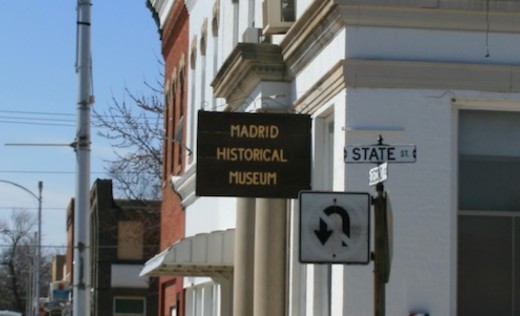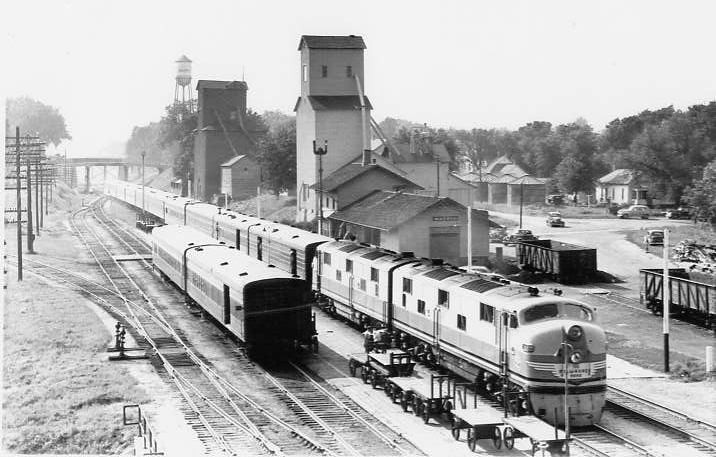Madrid Historical Museum
Introduction
Text-to-speech Audio
Images
Front entrance of the Madrid Historical Museum

Image symbolizing Madrid's historical relationship with trains and coal

Some of the dolls featured in the Clay Castle Museum

Backstory and Context
Text-to-speech Audio
History of Madrid and the Museum
The town of Madrid dates back to 1846, when Swedish settlers arrived and staked claim to the land. At first, the town was known as Swede Point, and it kept this name up until 1881 when both the east-west and north-south railroad lines came into the area.
The town boomed with the inclusion of the railroad, and citizens changed the town's name to Madrid in 1883. Although Madrid survived off an agricultural economy, it’s true prosperity and wealth came from coal mining. In fact, the coal mining industry was so proliferous that the town attracted many Italians and Croatians to Madrid between 1910 and 1945, which gave the town an international culture.
The Madrid Historical Society seeks to preserve Madrid’s unique history for generations to come through the Museum as well as its focus on the area’s coal mining and railroad past. Housed in the former Madrid State Bank building, which itself dates back to at least 1883, the Madrid Historical Society Museum features the architectural styles and beauty of four 1920s era buildings.1
Clay Castle Museum
Among the four buildings of the Museum, the Clay Castle Museum endures as one of the most intriguing, yet slightly strange museums throughout Iowa. For those wondering what one of the largest doll collections in the world looks like, the Clay Castle Museum is the place to go.
Many of the dolls featured in this collection were made or collected by Margaret Keigley. Keigley started collecting dolls with her mother in 1938, and her love of dolls followed her throughout life. In her later years, Keigley donated her dolls to the Museum. Numerous other community members and friends donated their dolls as well, and by 1994, the Museum counted upwards of 1,005 dolls of every size and description.
While walking through the Clay Castle Museum, visitors can discover doll houses, sewing machines, and other toys.2
Madrid Mine #7
Although dolls and coal mines may be an odd combination, the Madrid Historical Society is proud of the fascinating peek into history it offers. Therefore, after interacting with thousands of dolls in the Clay Castle Museum, visitors can then visit a full-sized replica of a room in an underground mine.
Located in the basement of the main entrance building, Madrid Mine #7 allows visitors to experience the claustrophobic atmosphere that miners had to endure as they toiled in dark mine tunnels. The replica also showcases a variety of mining artifacts picked up from other local mines.3
